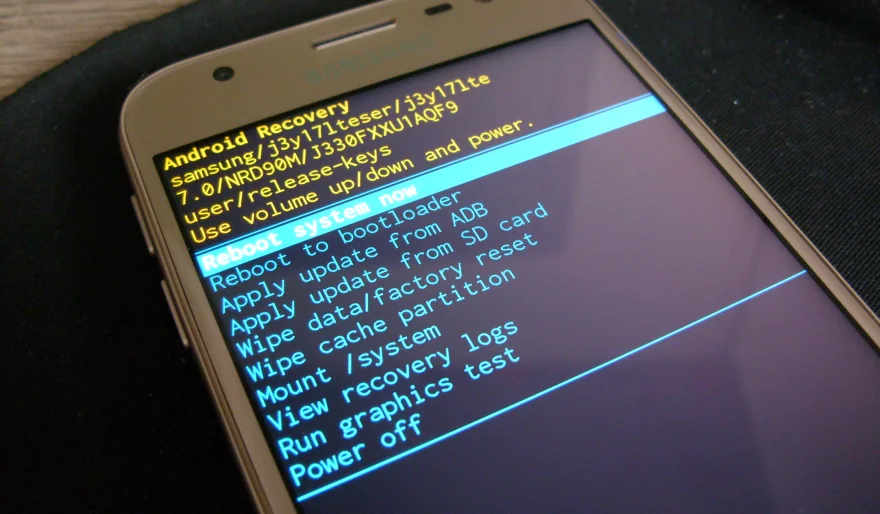How to revert to a previous software version on my phone?
15 min read How to revert to a previous software version on my phone? - written by Amine Rukhi, Content Creator February 28, 2024 11:51
How to revert to a previous software version on my phone?
1. Backing up your data
Another thing to remember is that contacts, messages, and call log which are stored on the SIM card are not always displayed when reverting back to a previous software version. The reason for this is because the older software version may not be compatible for storing data on the SIM card. Therefore, I recommend you backup contacts, messages, and call log in the backup application that you are using. This way, the data will be saved in the backup of the phone's storage rather than the SIM card. Also, before continuing to step 2, please ensure that your backup was successful by trying to locate the backup file on your computer and also try the backup verification process if the software has one.
If you want a complete backup of your phone, then I suggest you backup everything. If you only wish to save specific data, then uncheck everything and check the folder location where your data is stored. E.g. camera photos are found in /DCIM/camera on the phone's internal storage, so you should just check the 'Internal storage' box.
This is the first and also the most important step when attempting to revert your phone to a previous software version. During this stage, you should take a complete backup of your phone. To do this, you should use the software provided by your phone manufacturer. For example, HTC phones have the 'HTC Sync Manager', Samsung phones have 'Kies', and Sony phones have the 'Sony PC Companion'. The software can be downloaded from their respective websites and is free to download. The reason we use the manufacturer's software is because it can also save a backup of your phone's settings, i.e. Wi-Fi networks, display settings, etc. Whereas other backup applications found on the Android market generally only back up contacts, messages, call log, bookmarks, and APN settings. Manufacturer backups will also save everything just mentioned.
2. Downloading the previous software version
If you are not already an established user on your device, you will have to downgrade your device to a lower OS through DFU mode. If your device was never jailbroken, the downgrade will be quite simple. Make sure you have the latest version of iTunes installed. Plug your device into your computer and open iTunes. Your device will appear in iTunes. Select your device and hold the shift key on your computer while clicking on "Restore". A window will appear, allowing you to choose the file to restore your device to. A simple rule of thumb is that if you are on a Windows computer, use the shift key, and if you are on a Mac use the option key. This will only work if your device was never jailbroken. If you are a Mac user, you will have to download a specific version of the firmware and option click on "restore" to manually select the file you wish to restore your device to, after placing your device in DFU mode. If you are downgrading a device which was jailbroken at any point in its life, you will have to place the device in pwned DFU mode. This can be achieved using iREB RC4. Following that, open iTunes and select your device. Hold the shift key on your computer and click "Restore". A window will appear, allowing you to choose the file to restore your device to. This will allow you to downgrade your device to a lower OS, despite having been jailbroken at any point. To revert a rooted Android device to a previous OS, you will have to use ROMs specific to your device. Download a copy of the ROM from a reputable source on the internet and move it to the root of your device's internal memory. Reboot your device and hold the appropriate key to access the bootloader. This key varies on different devices. Usually a quick internet search, specifying your device model, will tell you which key to press. Once in the bootloader, use the volume keys to navigate and the power button to select. Select recovery, and then in recovery mode, select "install zip from sdcard". Then select "choose zip from sdcard" and choose the ROM you downloaded. This process may vary slightly between different devices and different recoveries. A quick search should give you specific instructions for your device.
3. Installing the previous software version
Next, you need to access the device. Enable the USB transport on the phone and then plug the phone into the PC. Open the device manager and check the ports list for the phone. If an item is missing, then a driver for the phone has not been installed and it will be necessary to get a driver that is suitable for both the make and model of the phone, as well as its version. Once the USB connection is operational, execute 'start'/'settings'/'control panel'/'phone and modem options'. Click the modems tab, double click the connection, and note the port. With the ports list and the ISPW file, use the WinSCP application to transfer the file to the /mip/ directory of the phone. This may take a while to do, as the WinSCP may have a slow data transfer rate.
98% of mobile phones use Java. The first step is making sure you have Java Development Kit installed. To do this, visit the control panel, then 'System' and click on 'Advanced' so that you can see the list of installed system variables. From here, create a new system variable called JAVA_HOME and set the value to the directory in which the JDK is installed.
To install a previous software version, you will need access to the .ispw file from the version of software that you need. These instructions focus on a mobile phone, but the same general principles can be applied to other USB-connectable devices. First, check that the software that you are about to install is not already on the device. Attempt to locate the file by searching first. If you cannot find the file, check to see if the phone has the capability to access it over the internet. If not, you may need to go back to where you got the file and click 'save' rather than 'install'.
4. Verifying the software version installation
This step is general and has been implemented to all software, even though each mobile has a different path. You can compare the software version with the version that you have found earlier.
Firstly, to check the software version that is currently installed on your device, follow these steps: Main Menu > Settings (tool icon) > About Phone > Software Information > Software Version
By verifying, users can feel assured and clear whether the current software version installed is different from the desired one. This explanation can be done in several parts, starting from checking the software version and how to learn the difference with the previous software version.
Various users are concerned with the previous software version installed on their device and later found out that the software installed is not the desired one due to some reasons. Software version may change through automatic update or unintentional act, which made users feel annoyed because some users have already found their favorite software version for certain reasons.
5. Troubleshooting and additional considerations
If the problem has resulted in what appears to be a crash or a hang, then there is likely enough information in the symptoms to diagnose and fix this problem. It can be difficult to identify such problems from bug reports and they are often considered showstoppers for a release. Do not bother trying to obtain a backtrace unless you can do so from a core file, as the stack and instruction pointer will be of no use due to changes in the code.
For particularly serious problems, you may consider reverting to the version of software that you were using before. If the problem is occurring because of differences in the configuration between the new version and the old version, it may be possible to set things right and try the upgrade again at a later time. If this is the case, then the problem should be explained in a bug report so that it can be avoided in the future. Note that in most cases, it is not expected that the new version of software will be compatible with old versions of configuration files. This is not an indication of a bug and the developers are not likely to make an effort to preserve compatibility in such a situation.
In giving a new device to testers, the most valuable testing is often that which confirms the occurrence of a bug that the developer can then track down and fix. If it turns out that there is a problem with the new version and the developer releases a fix, it is very helpful if you can provide information on what went wrong so that the developer knows what to fix. Use of the bug tracker is the best way to provide this information. With no clear indication of a problem, there is no way of knowing that it got fixed. Do not simply say that it does not work. This will not help to fix the problem because there is no way to verify whether or not the problem has been fixed. Instead, you should identify what you expected to happen, what actually happened, and what you were doing at the time.
It is common for a device to be in various states of completeness when it is first offered for upgrading. Different parts of the system may be in various stages of completion and may not work correctly, so it is not unexpected for there to be trouble in some cases. Do not expect everything to work perfectly yet.
User Comments (0)
Popular Apps










Editor's Choice









